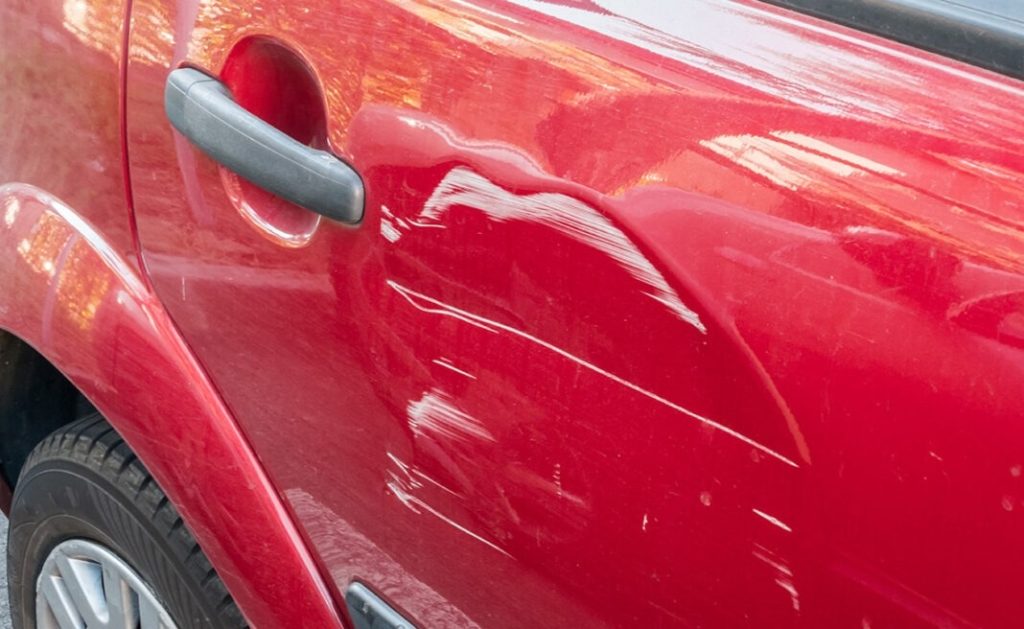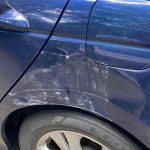In a world where appearances matter, scratches on your beloved possessions can be a real eyesore. The burning question that echoes in the minds of many is, “How much does it cost to buffer out scratches?” Fear not, as we delve into the world of scratch removal, exploring the expenses, effective solutions, and budget-friendly options for achieving that flawless finish.
Understanding the Scratch Dilemma
Before we get into the nitty-gritty of costs, let’s understand the nature of scratches. Scratches on cars, furniture, or electronic devices can diminish their aesthetic appeal and even affect their resale value. The severity of the scratches varies, ranging from superficial surface marks to deeper gouges.
Surface Scratches vs. Deep Gouges: Surface scratches, often caused by light abrasions, are usually easier and more cost-effective to repair. On the other hand, deep gouges that penetrate the material require more intricate restoration processes, often involving professional services.
The DIY Approach: Cost-Effective Solutions
1. Home Remedies
- Toothpaste Magic: Surprisingly, toothpaste can be a budget-friendly solution. Gently rub toothpaste on the scratched surface and witness the magic unfold. Toothpaste works well for mild surface scratches and is readily available in most households.
- Baking Soda Mix: Create a paste with baking soda and water, apply it to the scratches, and buff them out for a quick fix. This homemade solution is particularly effective for minor scratches on various surfaces.
2. Scratch Repair Kits
- Affordable Options: Explore scratch repair kits available in the market. These kits often include compounds and tools designed to minimize scratches without breaking the bank. They are user-friendly and can be a viable option for those who prefer a hands-on approach to scratch removal.
User-Friendly Solutions: Scratch repair kits are designed for consumers with varying levels of expertise. They come with detailed instructions, making them accessible to individuals with little to no experience in scratch repair.
Choosing the Right Kit: When selecting a scratch repair kit, consider the type of surface you are dealing with, whether it’s a car, furniture, or electronic device. Different kits cater to specific materials, ensuring optimal results.
Professional Assistance: Costs and Considerations
3. Auto Body Shops
- Paint Touch-Up: For car scratches, auto body shops offer paint touch-up services. Costs vary based on the size and depth of the scratches. Professional touch-up not only addresses scratches but also prevents further damage, such as rusting.
- Polishing Services: Professional polishing services can also contribute to scratch removal but at a higher cost. Polishing is effective for surface scratches and can restore the overall shine of your vehicle.
4. Furniture Repair Services
- Wooden Surfaces: Furniture scratches can be addressed by professional repair services specializing in wood finishes. Prices depend on the extent of the damage. Professional furniture repair ensures a seamless restoration, preserving the aesthetic integrity of the piece.
Specialized Techniques: Furniture repair services employ specialized techniques, such as color matching and blending, to ensure that the repaired area seamlessly integrates with the rest of the piece. This attention to detail contributes to a more polished and refined result.
5. Electronics Repair Shops
- Screen Scratches: Electronics repair shops can often buff out minor scratches on screens, but costs may be significant for more extensive damage. Repairing electronic devices requires precision, and professional services ensure that scratches are addressed without compromising the functionality of the device.
Screen Replacement Consideration: In cases where the screen is severely scratched or cracked, the cost of replacement versus repair should be evaluated. Sometimes, replacing the screen may be a more practical and cost-effective solution in the long run.
Factors Influencing Costs
6. Severity of Scratches
- Surface Scratches: Superficial scratches generally cost less to repair than deep gouges that may require more intricate restoration processes. Understanding the severity of the scratches is crucial in determining the most appropriate and cost-effective solution.
7. Material of the Surface
- Metal vs. Plastic: The material of the scratched surface impacts the cost. Metal surfaces may incur higher charges than plastic counterparts. Metal surfaces often require specialized treatments and finishes, contributing to the overall cost of scratch removal.
Material-Specific Treatments: Different materials demand different approaches. Understanding the unique characteristics of the scratched surface helps in choosing the right method for effective and economical scratch removal.
8. Size of the Damaged Area
- Localized vs. Extensive: Repairing a small scratched area is more cost-effective than addressing extensive damage that spans a larger surface. Assessing the size of the damaged area provides insight into the scale of the repair and its associated costs.
Economic Considerations: For those on a budget, focusing on localized repairs can be a strategic approach. This allows individuals to address specific areas of concern without incurring unnecessary expenses for extensive treatments.
Budgeting Tips for Scratch Removal
9. Get Multiple Quotes
- Shop Around: Whether opting for DIY solutions or professional services, obtaining quotes from different sources allows you to make an informed decision. Comparing quotes not only helps in budgeting but also provides insights into the range of services offered.
Informed Decision-Making: Gathering multiple quotes empowers consumers to make informed decisions based on both cost and the quality of services offered. It’s an essential step in ensuring that the chosen solution aligns with individual preferences and financial considerations.
10. Insurance Coverage
- Evaluate Policies: Check if your insurance covers scratch repairs, especially in the case of vehicle damages. Some insurance policies may include coverage for cosmetic repairs, reducing out-of-pocket expenses.
Insurance Premium Consideration: While evaluating insurance coverage, consider the potential impact on premiums. In some cases, filing a claim for minor cosmetic repairs may lead to increased premiums, making it essential to weigh the pros and cons.
Expert Tips for Effective Scratch Removal
Introducing a collection of expert tips to elevate your scratch removal game. Whether you’re tackling minor surface blemishes or deeper gouges, these insights will guide you towards achieving impeccable results.
1. Assess the Depth Before You Act
Before reaching for a solution, assess the depth of the scratches. Superficial scratches may respond well to DIY remedies, while deeper gouges may necessitate professional intervention. Understanding the severity ensures you choose the most effective and cost-efficient approach. (See Also: How Much Does It Cost to Buff a Truck? Your Complete Guide to Truck Buffing Expenses)
2. Match Materials for Optimal Results
Different surfaces demand different treatments. Ensure your chosen scratch removal method aligns with the material you’re working on—whether it’s metal, wood, plastic, or glass. Material-specific approaches contribute to better outcomes and minimize the risk of further damage.
3. Start Small with DIY Solutions
For minor scratches, begin with accessible and budget-friendly DIY solutions. Toothpaste and baking soda pastes can work wonders on surface scratches. Starting small allows you to gauge the effectiveness of the remedy without significant investment.
4. Invest in Quality Scratch Repair Kits
When opting for a scratch repair kit, prioritize quality over quantity. Investing in a reputable kit ensures you have the right compounds and tools for the job. Read reviews and choose a kit that suits your specific needs, whether it’s for cars, furniture, or electronics.
5. Know When to Seek Professional Help
Deep scratches and extensive damage may warrant professional assistance. Auto body shops, furniture repair services, and electronics repair shops have the expertise and tools to address complex issues. Knowing when to seek professional help prevents potential DIY mishaps.
6. Consider Insurance Coverage
Evaluate your insurance policies, especially for car scratches. Some insurance plans cover cosmetic repairs, potentially reducing out-of-pocket expenses. However, weigh the impact on premiums before filing a claim for minor damages.
7. Protect and Prevent Future Scratches
Once you’ve achieved a scratch-free surface, take proactive measures to prevent future scratches. Consider protective coatings, regular maintenance, and safe storage practices to ensure the longevity of your possessions.
8. Regularly Inspect and Address Scratches
Be vigilant in inspecting your belongings for scratches. Addressing them promptly prevents minor scratches from escalating into more significant issues. Regular maintenance and quick intervention contribute to a consistently flawless appearance.
9. Use Microfiber Cloths for Polishing
When polishing surfaces, opt for microfiber cloths. These gentle yet effective cloths minimize the risk of creating additional scratches during the polishing process. Choose quality microfiber cloths to achieve a streak-free and polished finish.
10. Seek Recommendations for Professional Services
If opting for professional services, seek recommendations from trusted sources. Word-of-mouth referrals often provide insights into the quality of service and results. Explore reviews and testimonials to ensure you choose a reputable service provider.
11. Understand Insurance Premium Implications
While insurance coverage can be beneficial, understand the potential implications on premiums. Evaluate the long-term cost-effectiveness of filing a claim for cosmetic repairs, considering the impact on future insurance costs.
12. Educate Yourself on DIY Techniques
Before attempting DIY scratch removal, educate yourself on the specific techniques required for the material in question. Understanding the nuances of the process enhances your confidence and improves the likelihood of successful outcomes.
13. Test DIY Solutions in Inconspicuous Areas
Before applying DIY solutions to visible areas, test them in inconspicuous spots. This precaution helps you assess the compatibility of the remedy with the material and ensures it doesn’t cause unintended damage.
14. Follow Manufacturer Guidelines for Electronics
When dealing with scratches on electronic devices, adhere to manufacturer guidelines. Some DIY solutions may void warranties or damage sensitive components. Following manufacturer recommendations ensures safe and effective scratch removal. (See Also: Will Acetone Remove Ceramic Coating? Discover the Truth Here!)
15. Celebrate Success, Learn from Failures
Whether your scratch removal venture ends in success or reveals areas for improvement, celebrate the journey. Each attempt contributes to your expertise. Learn from failures, refine your approach, and embrace the satisfaction of restoring your possessions to their pristine state.
Frequently Asked Questions About Scratches and Their Removal
Navigating the world of scratch removal can be a puzzling journey, filled with questions about costs, methods, and effectiveness. Here are some frequently asked questions to guide you through the process.
1. What Causes Scratches on Different Surfaces?
Scratches can result from various factors, including abrasive contact, friction, or impact. For cars, road debris and environmental elements play a role. Furniture and electronic devices may be scratched during regular use or mishandling.
2. Can Toothpaste Really Remove Scratches?
Yes, toothpaste can be effective for minor surface scratches. The mild abrasiveness helps buff out the scratches. However, it’s crucial to use a non-gel toothpaste and test it in a small area first.
3. Do Scratch Repair Kits Work on All Materials?
Scratch repair kits are designed for specific materials. It’s essential to choose a kit that aligns with the material of the scratched surface—whether it’s metal, plastic, wood, or glass—for optimal results.
4. How Much Does Professional Scratch Removal Cost?
The cost of professional scratch removal varies based on factors such as the severity of scratches, the material involved, and the type of professional service required. Auto body shops, furniture repair services, and electronics repair shops may have different pricing structures.
5. Will Filing an Insurance Claim for Scratches Affect Premiums?
Filing an insurance claim for minor cosmetic repairs, such as scratches, may impact premiums. It’s advisable to evaluate the long-term cost-effectiveness and potential premium increases before making a claim.
6. Are DIY Solutions Safe for Electronics?
DIY solutions can be safe for electronics if used cautiously. It’s crucial to follow manufacturer guidelines and test any solution in an inconspicuous area. In some cases, seeking professional help for electronic devices may be the best course of action.
7. How Can I Prevent Future Scratches?
Preventing future scratches involves using protective coatings, practicing careful handling, and implementing regular maintenance. Consider storage solutions that minimize the risk of abrasive contact and invest in protective measures suitable for each type of surface.
8. What’s the Difference Between Surface Scratches and Deep Gouges?
Surface scratches are minor abrasions that affect the top layer of a material. Deep gouges penetrate the material, requiring more intricate restoration processes. The severity of the scratch influences the choice between DIY remedies and professional intervention.
9. Do Scratches Affect the Resale Value of Cars and Furniture?
Yes, scratches can impact the resale value of cars and furniture. Potential buyers often consider the overall aesthetic condition of the item. Addressing scratches promptly, either through DIY methods or professional services, can help maintain or enhance resale value.
10. Can I Use the Same Scratch Removal Method for Different Materials?
While some general DIY solutions may work on various materials, it’s advisable to tailor the approach to the specific material. Different surfaces, such as metal, wood, and plastic, may respond differently to scratch removal methods. (See Also: How to Clean Lexus Dashboard: A Step-by-Step Guide for a Spotless Interior)
11. How Often Should I Inspect Belongings for Scratches?
Regular inspections are key to addressing scratches promptly. Depending on the frequency of use and exposure to potential sources of abrasion, consider inspecting your belongings every few weeks to catch and remedy scratches early.
12. Are There Eco-Friendly Scratch Removal Options?
Some eco-friendly options exist for scratch removal, such as natural-based compounds. When opting for DIY solutions or professional services, inquire about environmentally friendly alternatives to minimize the environmental impact.
13. Can I Repair Scratches on a Car’s Windshield Myself?
Repairing scratches on a car’s windshield may require specialized professional services. DIY solutions may not be suitable for glass surfaces, and attempting to fix them without expertise could result in further damage.
14. What If DIY Methods Don’t Remove the Scratches?
If DIY methods prove ineffective, consider seeking professional advice. Professionals can assess the severity of the scratches and recommend appropriate measures. Continued attempts at DIY repair without success may lead to additional damage.
15. Is It Worth Investing in Scratch Prevention Products?
Investing in scratch prevention products, such as screen protectors for electronic devices or clear coatings for car surfaces, can be worthwhile. These products provide an added layer of protection, reducing the risk of scratches and preserving the integrity of surfaces.
Conclusion: Investing in Flawlessness
As we wrap up our exploration of the costs associated with buffering out scratches, remember that the price tag often reflects the quality of the repair. Whether choosing a DIY remedy or seeking professional assistance, investing in the restoration of your prized possessions can be a worthwhile endeavor.
The Value of Aesthetics: A scratch-free surface not only enhances the visual appeal of your belongings but also contributes to their longevity. By addressing scratches promptly, you not only restore their appearance but also protect them from potential further damage.
Personalized Solutions: The choice between DIY and professional services ultimately depends on personal preferences, available time, and the extent of the damage. Regardless of the chosen path, the satisfaction of seeing a cherished possession restored to its former glory is a reward in itself.
So, the next time scratches threaten to mar your belongings, weigh your options and make a choice that aligns with both your budget and your desire for perfection. After all, a scratch-free surface is not just a visual delight but also a testament to the care you bestow upon your cherished items. Happy buffing!



